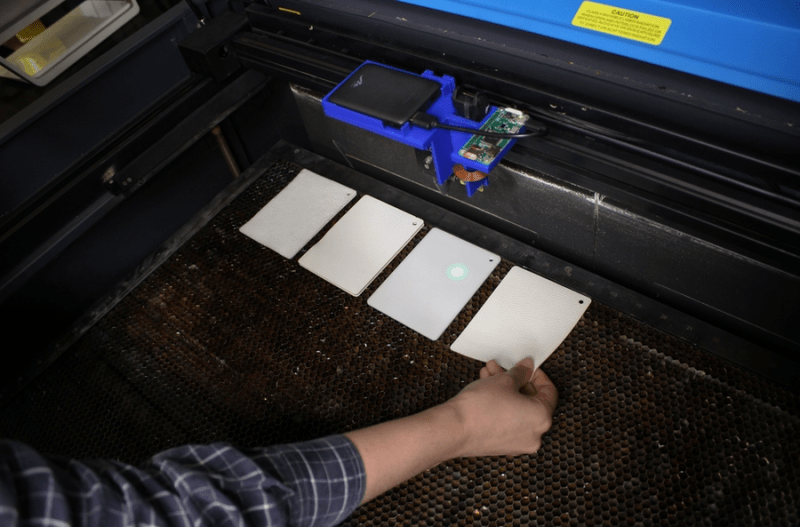Come on now, admit it. You’ve done it. We’ve done it. You know — you were really sure that sheet of plastic stock you found lying around the hackerspace was acrylic right? You dialled in the settings, loaded the design, set the focus and pushed the little green ‘start’ button. Lots of black smoke, fire, and general badness ensued as you lunged for the red ‘stop’ button, before lifting the lid to work out how you’re going to clean this one up.
That was not acrylic. That was polycarbonate.
What you need is the latest gadget from MIT: SensiCut: A smart laser cutter system that detects different materials automatically.
The technique makes use of so-called ‘speckle imaging’ where a material illuminated by a laser will produce a unique pattern of reflected spots, or speckles into a camera. By training a deep neural model with a large set of samples, it was found possible to detect up to 30 types of material with 98% accuracy.
The pre-baked model runs on a Raspberry PI zero with an off-the-shelf camera all powered from a power bank. This allows the whole assembly to simply drop onto an existing laser cutter head, with no wiring needed.
Even if you’re a seasoned laser cutter user, with a well-controlled stock pile, the peace-of-mind this could give would definitely be worth the effort. A more detailed description and more videos may be found by reading the full paper. Here’s hoping they release the system as open source, one day in the not-to-distant future. If not, then, you know what to do :)

















Wow! Awesome!
Running a hackerspace with a laser is always a challenge, this would eliminate a lot of common problems.
Even though I dislike software-as-service, I found Glowforge with QR coded material was a great system
to help manage that (although not without a cost…). This SensiCut opens up much more possibilities.
Would be nice to combine this with some sort of thickness/surface detector. Then you just put some material in and position the part, and either it starts cutting without any need to input settings, or it gives you and error because the material is not suitable to cut.
This would be great to play around with.
Imagine this on a robot. Perhaps sorting plastic for recycling? Or even just running around your house categorizing everything in sight.
“Ad-on”? It invites you to try a Big Mac, or something?
Came here to see that, now satisfied.
Thanks!
Sounds like this system would be a great thing for plastic recycling centers, too.
They already use things like this, along side with a bunch of other technologies.
Tomra is on of those companies: https://www.tomra.com/en/sorting/recycling/tomra-technology/lod
can it be a handheld standalone device?
I’m kinda sceptical it works that well with different colours of materials. Our local council can’t reliably identify 5-6 types of material in all colours & thicknesses, so we can’t recycle any black plastic, or plastic film.
Or it could well be this neural net is smarter than our council… it wouldn’t be hard …
“Ad-on” or “Add-on”?